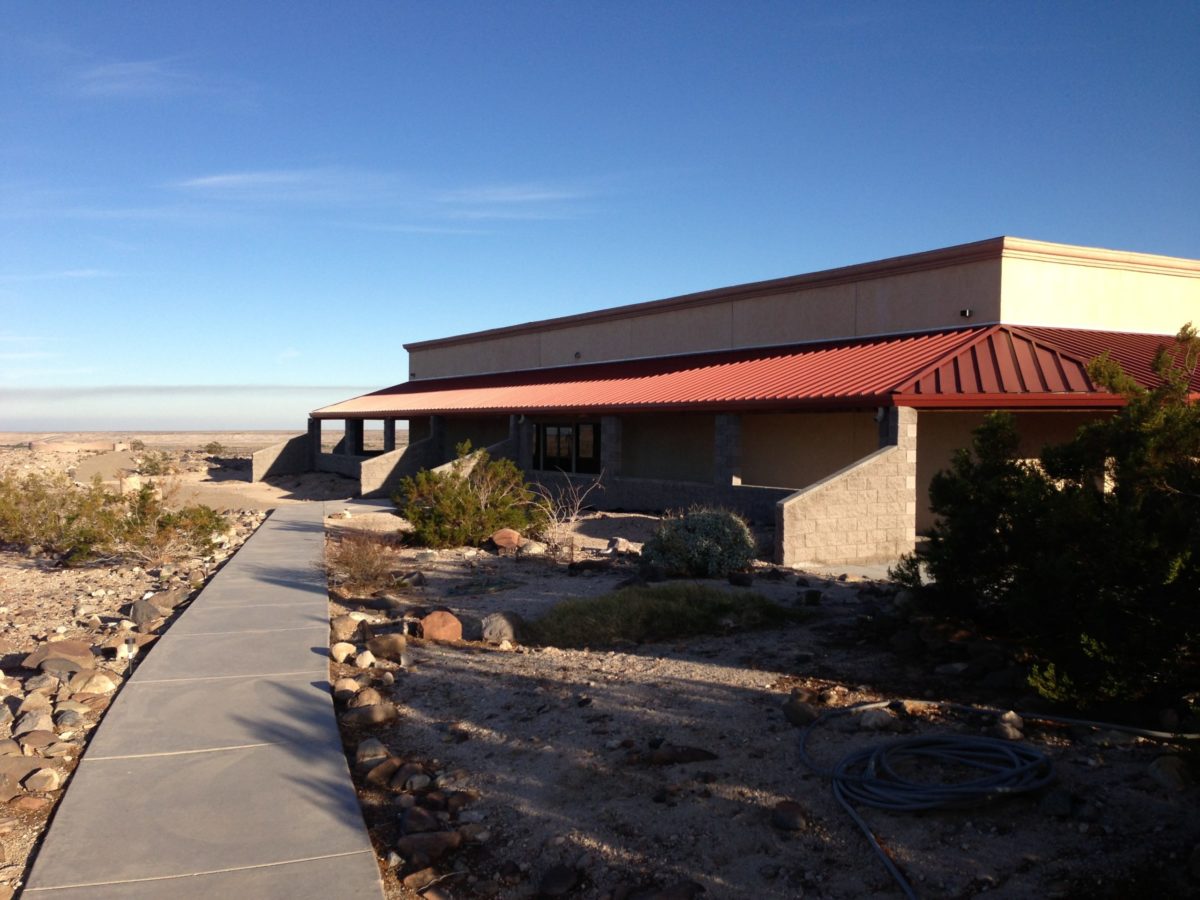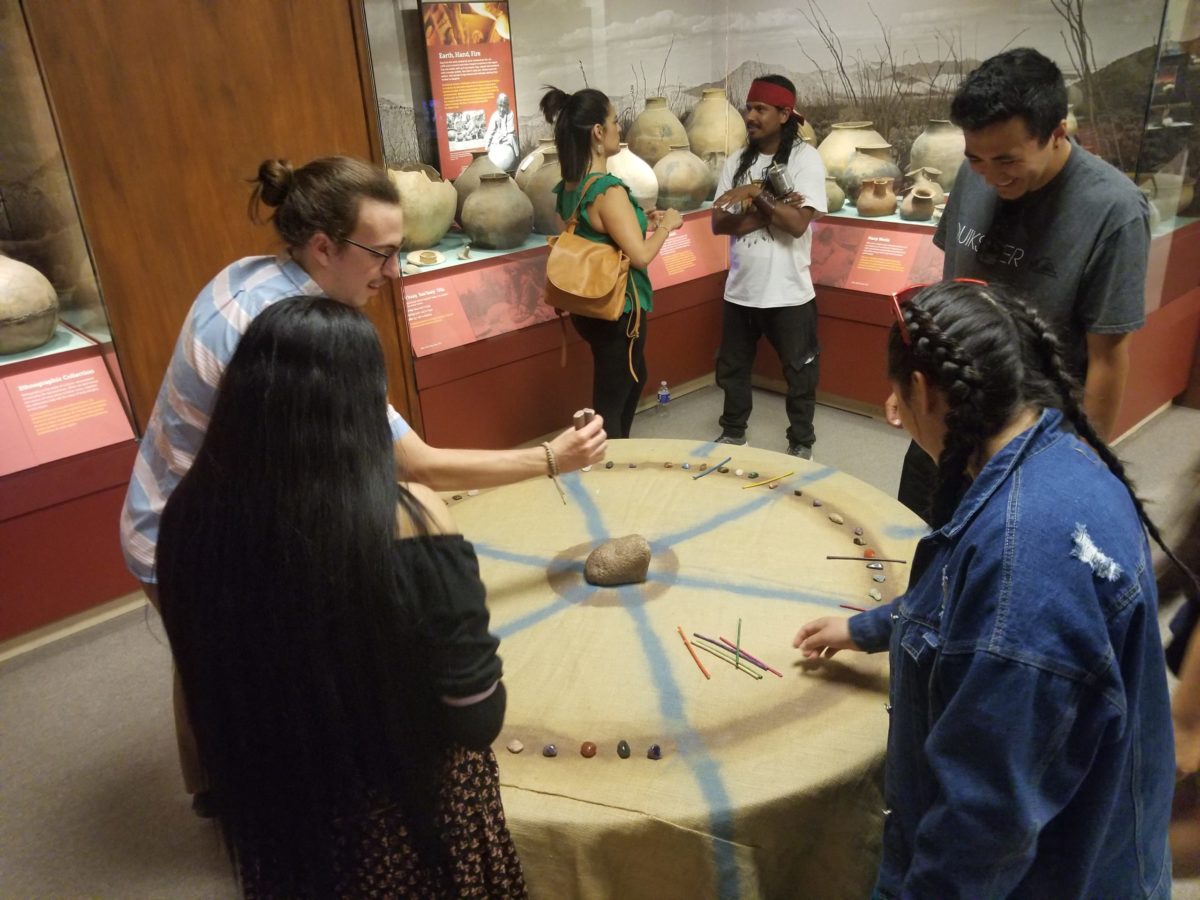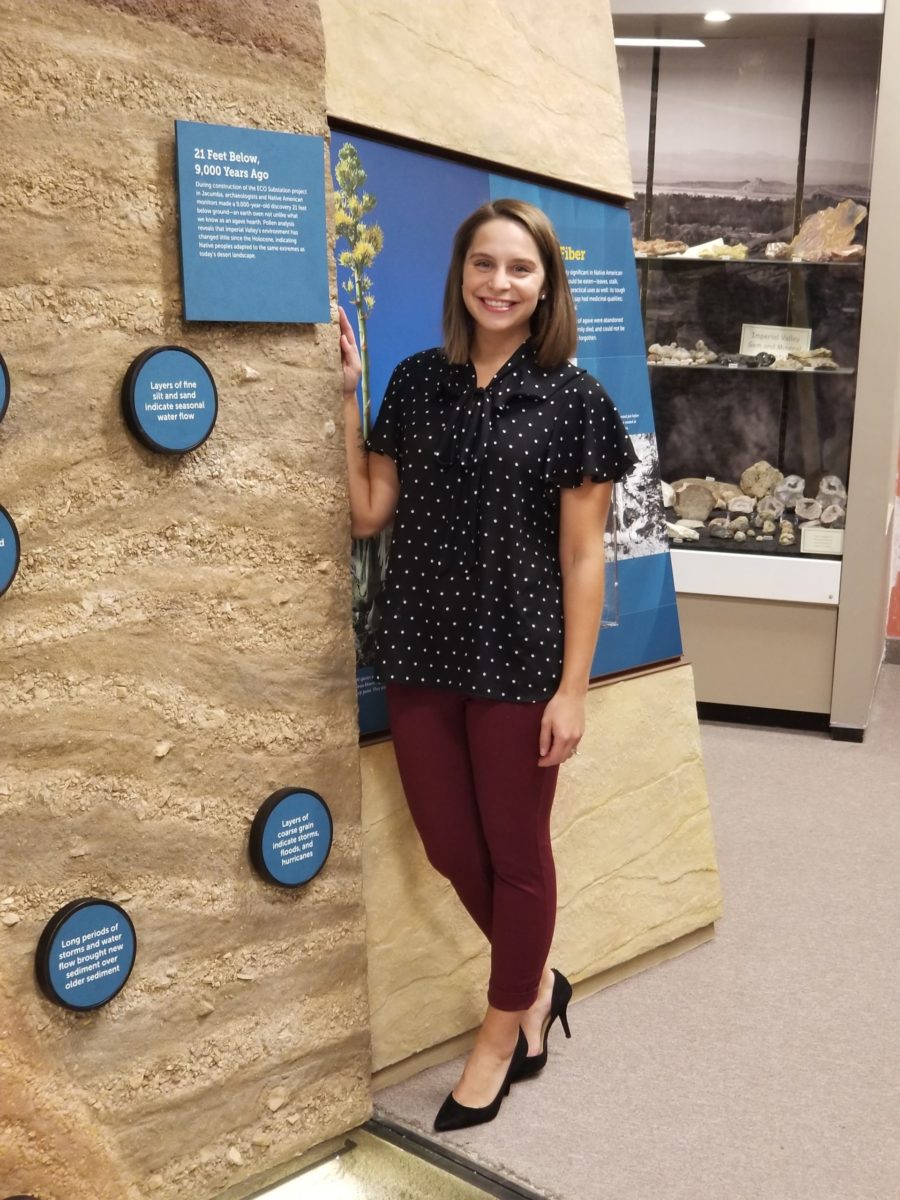“When we accept a new collection, we try our very best to go through it thoroughly so we don’t accept anything that would go under the Native American Graves Protection and Repatriation Act. In the event that we find ourselves going through a collection we accepted before this point or if we find anything we missed, we go through the repatriation process to return the items to the rightful Indigenous community,” she explains.
The Imperial Valley Desert Museum continues to grow, thanks to its focus on connecting with the community and local Indigenous Peoples.
“We definitely see ourselves as more than a museum. We see ourselves as a community resource,” explains Kristin O’Lear, Interim Executive Director of the museum.

The front view of the Imperial Valley Desert Museum
Reaching Out to the Community
She says it was the previous Executive Director Neal Hitch who shifted towards this mindset when the museum re-opened in 2012 after the original building was destroyed by an earthquake. (LINK)
“It’s the idea of existing outside of four walls and getting out in the community and really being a presence in a variety of ways. Not only do we have field trips for students to come visit us, but we also have a History-On-The-Go program. It’s for schools who may not be able to rent a school bus to come see us, so instead we bring history to them,” she explains.
Since its opening, the museum has increased from 2,000 visitors per year to over 22,000. The Education Program, which first started in 2015 with only a few hundred students, has likewise grown and served over 9,500 students during the pandemic.
“Our field trip programs have really helped grow the number of people who visit us. We don’t charge regular admission, but visitors can make a donation. Donations at the door help cover the cost of a field trip for students in need,” she says.
Honoring Indigenous Peoples and History
The IVDM focuses on preserving and celebrating the desert but it also places great importance on Indigenous history, culture, and art.
“We recognize that we are on their traditional land, and the Imperial Valley Desert Museum is on the traditional land of Kumeyaay Nation,” Kristin explains.
With over 30,000 artifacts, Kristin says it’s important to honor the deep history of each piece.
“When we accept a new collection, we try our very best to go through it thoroughly so we don’t accept anything that would go under the Native American Graves Protection and Repatriation Act.
In the event that we find ourselves going through a collection that we accepted in the past, or if we find anything we missed, we go through the repatriation process to return the items to the rightful Indigenous community,” she explains.

The museum holds an annual event called Indigneous Cultures Day. This photo was taken at the 2019 event.
Kristin says they are working on building stronger relationships with local Indigenous Peoples, but there are always new things to learn and new conversations to have.
“It’s a very open and honest dialogue that we have with Indigenous communities,” Kristin says.
Celebrating the Landscape
The museum is also working on building relationships with the broader community.
“We heard a lot of feedback that people didn’t think to come visit us or that they didn’t know what we’re about, so we made some adjustments and increased our presence in the community,” she says.
One way they did that is by taking history outside.
“We’re in Ocotillo, but we also want to be a resource for the Imperial Valley and eastern San Diego County. We do hiking programs, which we were recently able to bring back. Every couple of weeks, we do a special hike to show people how beautiful this area is, whether that’s geologically, historically, or culturally,” she says.
Another way they’re reaching out beyond their four walls is by hosting events.
“Every season, we have a different activity that highlights the beauty of the local area. In the summer, we have Ocotillo Water Days celebrating how important water is to life in the desert. In the fall, we have Ocotillo Rocks about the geological diversity of this region and how water, volcanoes, and earthquakes have shaped this area,” she says.

Kristin O’Lear, Interim Executive Director of the museum
A Decade of Growth
The museum has also made a name for itself nationally and internationally.
“The support IVDM has received from Pattern Energy’s Ocotillo Wind project since 2013 has been instrumental to our ongoing success. The original amount given to IVDM also made possible the installation of our permanent exhibit area on the Museum’s main floor,” said previous Executive Director David Breeckner in 2021.
Despite their small size, the impact of this local museum is demonstrated through their past and present programs, including:
- Annual student internships and classroom partnerships with San Diego State University Calexico’s Department of History
- Programming partnerships serving system-engaged youth in the County of Imperial Juvenile Hall
- A Kumeyaay Student Internship, providing professional training and college credit to graduating high school seniors
“IVDM has been featured in national television programs, hosted international talks, developed nationally-toured art exhibits, and much more,” said Breeckner.
The Next 10 Years
While the museum has come a long way in the past ten years, Kristin says there’s still a long way to go, but she’s excited to see it continue to grow.
“Some of my goals are to continue growing our presence in the community, growing our advocacy work with Indigneous communities – we want to continue being an ally. We also want to see our facility, staff, and budgets grow,” she says.
Ongoing support from Pattern Energy through the Ocotillo Wind Community Benefits Program will continue to benefit a key role at the museum.
“The funds support the curator positions – the Curatorial Fellow, and the Head Curator. This sponsorship really helps provide for the people who best know how to take care of the artifacts,” Kristin explains.

A look at the landscape surrounding the museum.